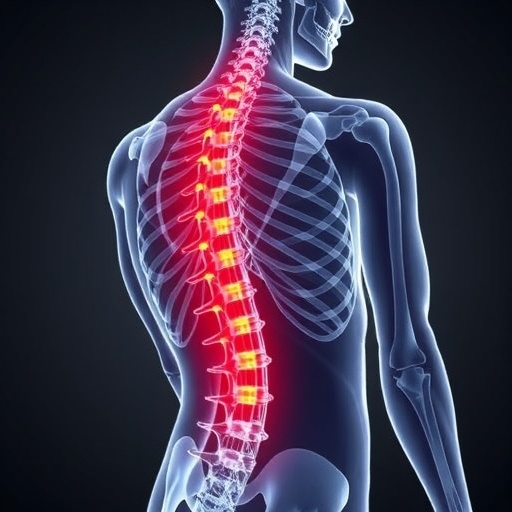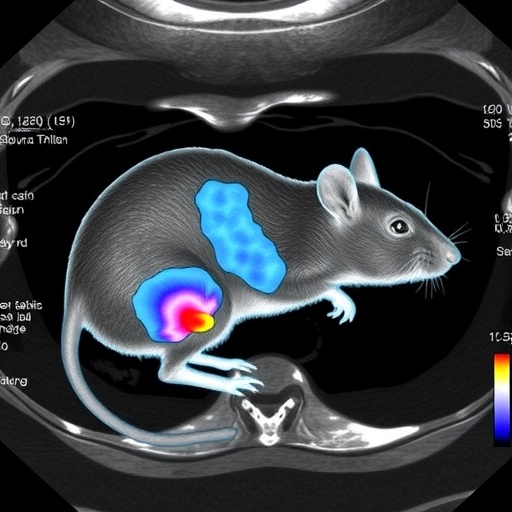In a groundbreaking stride toward revolutionizing the management of Parkinson’s disease, researchers have unveiled compelling evidence supporting the use of wrist-worn devices as a reliable and valid method for assessing tremor severity in patients within the comfort of their homes. This novel approach, described in a recent publication in npj Parkinson’s Disease, promises to enhance the precision of symptom tracking outside clinical settings, potentially transforming both diagnostic and therapeutic landscapes.
Parkinson’s disease, a progressive neurodegenerative disorder, is often characterized by motor symptoms such as tremors, rigidity, and bradykinesia. Tremors, particularly resting tremors, are among the earliest and most recognizable signs, significantly impacting patients’ quality of life. Traditional clinical assessments require patients to visit specialized centers where experts conduct in-person evaluations, frequently relying on subjective rating scales. These evaluations, while clinically informative, are limited by their episodic nature and potential observer bias.
Addressing these barriers, the team led by Hepp et al. introduced a wrist-worn device capable of continuously monitoring tremor characteristics using advanced accelerometer and gyroscope technologies. By embedding sensors that capture motion data with high temporal fidelity, the device enables quantifiable measurement of tremor amplitude and frequency throughout daily activities. This continuous data stream is then analyzed using validated algorithms to provide objective, fine-grained symptom profiles.
For the investigation, participants diagnosed with Parkinson’s disease were equipped with the wrist device and instructed to wear it during their normal routines at home. The researchers meticulously compared the tremor data extracted from the device to conventional clinical rating scales administered by movement disorder specialists. The results demonstrated remarkable concordance, affirming the device’s reliability in capturing tremor features consistent with clinical observations.
One of the most striking aspects of this study lies in its confirmation of validity—the extent to which the device measures exactly what it purports to. Validity was assessed through both concurrent and predictive methods, with the device successfully aligning with real-time clinical evaluations and accurately forecasting tremor fluctuations over extended periods. This reliability paves the way for its use as an effective tool not only for assessment but potentially for monitoring therapeutic interventions.
Such a technology addresses a critical need: the capability to remotely monitor Parkinson’s symptoms with high fidelity outside traditional clinical environments. Patients often experience symptom variability throughout the day, influenced by medication timing, stress levels, and activity. Capturing this dynamic symptomatology is essential for personalizing treatment plans but has been historically elusive. The wrist device’s capacity for continuous measurement opens new horizons in personalized medicine.
Moreover, the implications extend beyond simple symptom tracking. Real-time data may facilitate adaptive therapeutic approaches, where medications or stimulation therapies can be adjusted responsively to objective tremor severity metrics. This could lead to more stable symptom control and improved patient outcomes, reducing the burden of frequent clinic visits and subjective reporting inconsistencies.
The study also navigated challenges pertaining to device usability, including comfort for extended wear and data security—both paramount for patient adherence and privacy. The ergonomic design ensured minimal interference with daily activities, while data encryption protocols fortified patient data against breaches. These factors are instrumental in real-world adoption.
Delving into the technical framework, the wrist-worn device integrates inertial measurement units (IMUs) which detect multi-axis movements. Signal processing techniques, such as Fourier transformations, dissect the raw acceleration signals to identify tremor-specific frequencies typically within 3-7 Hz, characteristic of Parkinsonian tremors. This sophisticated analytical pipeline filters noise from voluntary movements, isolating pathological tremor patterns with high sensitivity.
Additionally, the study employed rigorous statistical analyses to ascertain measurement consistency—calculating intraclass correlation coefficients (ICCs) and Bland-Altman plots to verify inter-device and intra-subject reliability. These methods confirmed that repeated measures over time and across device units produced stable results, a critical aspect for longitudinal patient monitoring.
Importantly, the researchers underscored the utility of this technology in enabling remote clinical trials and research studies by providing continuous, standardized data streams unobtainable through traditional methods. Such data can deepen understanding of disease progression and responsiveness to novel pharmacological or device-based interventions.
Furthermore, the democratization of Parkinson’s disease monitoring through consumer-grade wrist devices promises to reduce healthcare disparities by increasing access to objective symptom assessment in under-resourced settings. Patients geographically distant from specialty centers could benefit from reliable data transmission to clinicians, enhancing care continuity.
While the study establishes a solid foundation for wrist-worn devices, the authors advocate for further research encompassing larger and more diverse cohorts. Additionally, integration with machine learning models could enhance tremor classification and predictive analytics, augmenting clinical decision-making capabilities.
In conclusion, the compelling evidence presented by Hepp et al. marks a significant advance in Parkinson’s disease management, bridging the gap between clinical symptomatology and real-world behavior through wearable technology. This innovation heralds an era wherein personalized, data-driven care is attainable, potentially improving the lives of millions grappling with the relentless challenges of Parkinson’s disease.
Subject of Research: Wrist-worn device technology for remote assessment of tremor in Parkinson’s disease patients.
Article Title: Added value of a wrist-worn device for assessing tremor in Parkinson’s disease: reliability and validity of tremor evaluation at home.
Article References:
Hepp, D.H., Ocran, K., Szanto, A. et al. Added value of a wrist-worn device for assessing tremor in Parkinson’s disease: reliability and validity of tremor evaluation at home. npj Parkinsons Dis. 11, 327 (2025). https://doi.org/10.1038/s41531-025-01163-0
Image Credits: AI Generated
DOI: https://doi.org/10.1038/s41531-025-01163-0
Tags: accelerometer and gyroscope applications in healthcareadvanced motion sensors for health monitoringat-home tremor monitoring technologycontinuous tremor assessment methodsenhancing quality of life for Parkinson’s patientsinnovative approaches to neurodegenerative disease evaluationneurodegenerative disorder management innovationsobjective tremor measurement techniquesParkinson’s disease symptom trackingremote patient monitoring technologiestransforming Parkinson’s diagnosticswrist-worn devices for Parkinson’s assessment





